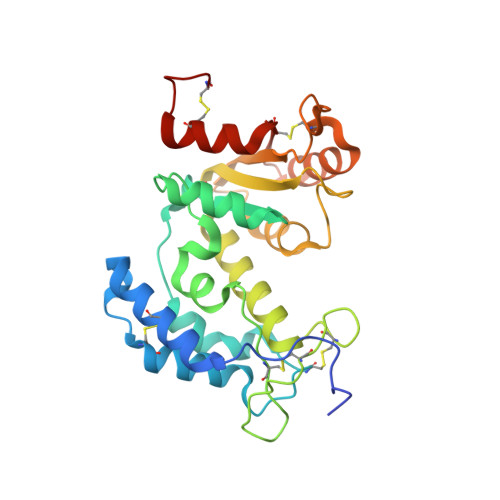Structural basis for the mechanistic understanding of human CD38-controlled multiple catalysis.
Liu, Q., Kriksunov, I.A., Graeff, R., Munshi, C., Lee, H.C., Hao, Q.(2006) J Biol Chem 281: 32861-32869
- PubMed: 16951430
- DOI: https://doi.org/10.1074/jbc.M606365200
- Primary Citation of Related Structures:
2I65, 2I66, 2I67 - PubMed Abstract:
The enzymatic cleavage of the nicotinamide-glycosidic bond on nicotinamide adenine dinucleotide (NAD(+)) has been proposed to go through an oxocarbenium ion-like transition state. Because of the instability of the ionic intermediate, there has been no structural report on such a transient reactive species. Human CD38 is an ectoenzyme that can use NAD(+) to synthesize two calcium-mobilizing molecules. By using NAD(+) and a surrogate substrate, NGD(+), we captured and determined crystal structures of the enzyme complexed with an intermediate, a substrate, and a product along the reaction pathway. Our results showed that the intermediate is stabilized by polar interactions with the catalytic residue Glu(226) rather than by a covalent linkage. The polar interactions between Glu(226) and the substrate 2',3'-OH groups are essential for initiating catalysis. Ser(193) was demonstrated to have a regulative role during catalysis and is likely to be involved in intermediate stabilization. In addition, a product inhibition effect by ADP-ribose (through the reorientation of the product) or GDP-ribose (through the formation of a covalently linked GDP-ribose dimer) was observed. These structural data provide insights into the understanding of multiple catalysis and clues for drug design.
Organizational Affiliation:
Macromolecular Diffraction Facility at the Cornell High Energy Synchrotron Source (MacCHESS), Cornell University, Ithaca, NY 14853, USA.
















